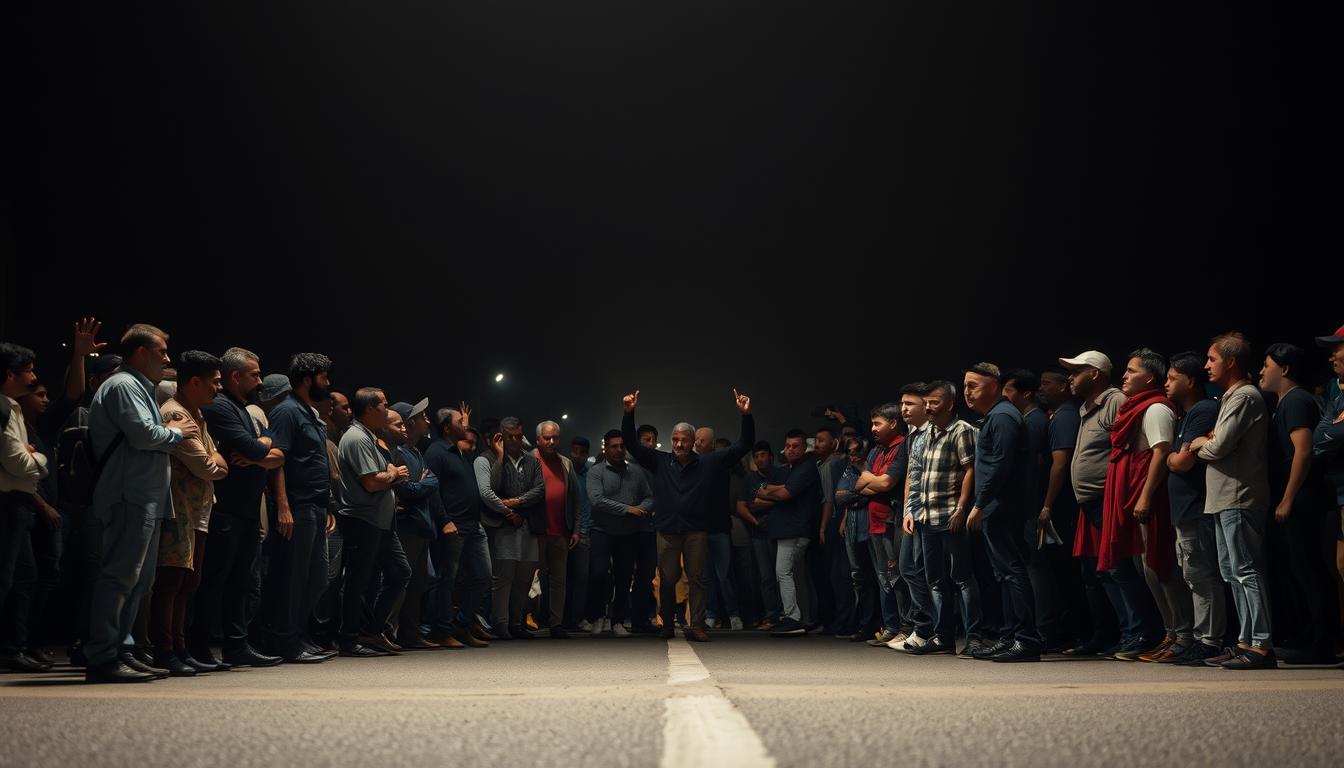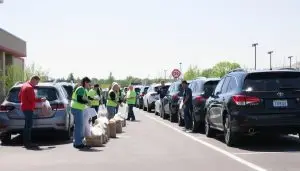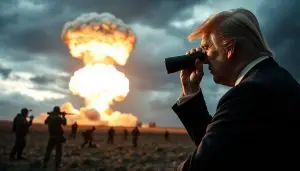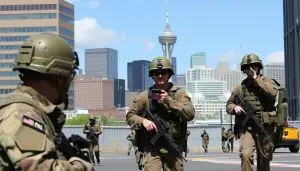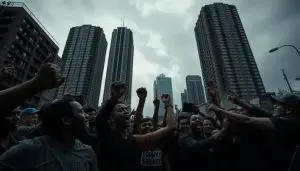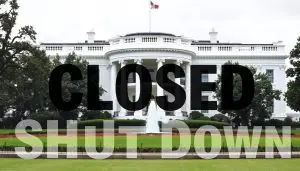Rising Political Violence in America: Public Reaction.
Explore the latest developments and public reactions to the rising political violence in America shaping today’s political landscape.
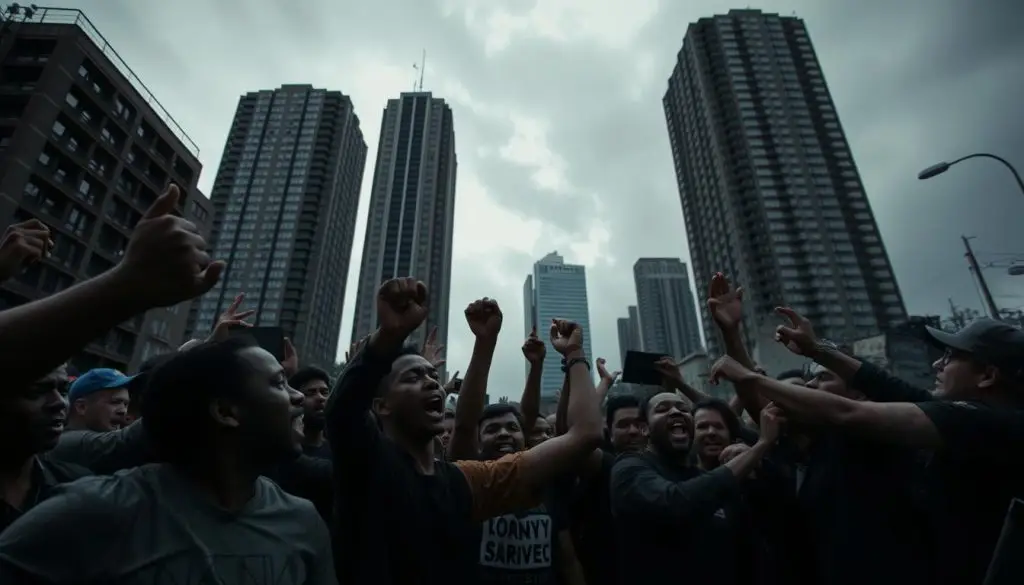
Rising Political Violence
Rising Political Violence: I often reflect on how fear can become a pervasive part of our daily lives. Political violence in America is no longer just a worry; it’s a reality. It affects our conversations, how we meet, and our mutual trust.
A recent poll by POLITICO/Public First shows most Americans believe the threat of violence will grow. Fifty-five percent think there will be more attacks, and many fear a candidate could be killed soon. This fear is shared across different political views and age groups. It’s a rare moment of agreement in our loud world, and it’s hard to accept. Trump’s Nuclear Tests
We’ve seen many high-profile targets face danger, from attempts on President Donald Trump’s life in 2024 to recent attacks on activists. Experts say we’ve entered a new era of “violent populism.” I feel like we’ve moved from being on the brink to being in the grip of violence. Can we find a common ground to stand together?
Despite the fear, most people reject violence, while a small group thinks it’s sometimes okay. This shows a deeper issue beneath the surface. For more on the rising threats and incidents, check out this CBS News analysis. It offers a map of the turmoil and unrest in American society that we’re trying to understand.
Rising Political Violence Key Takeaways
- A majority of Americans expect political violence to increase in the near term.
- Fear crosses party and age lines, becoming a rare point of consensus.
- High-profile attacks and threats signal an era many scholars call āviolent populism.ā
- Most people say violence is never justified, yet a notable minority disagrees.
- Threats against public figures and offices are mounting across the country.
- Political violence trends mirror deeper American political turmoil and social strain.
Public Sentiment: Pessimism, Fear, and a Rare Point of Consensus
Walking down the street or on the subway, I often hear the same question. Is violence in US politics becoming the new normal? It’s a feeling I share with many. The mood is gloomy, reflecting the headlines and shaping them.
When I reflect on my own worries, I see a bigger picture. Political unrest in the USA is affecting our daily lives. Neighbors whisper, and friends hesitate before posting online. This hesitation speaks volumes about the growing political conflict that many sense but can’t quite name.
The majority expects escalation: 55% foresee increasing political violence
A recent survey found that 55 percent of Americans think political violence will rise. Reading this made my stomach sink. The number is steady and hard to ignore.
See This about the Government Shutdown
This isn’t just a theory to me. It shows up in our cautious conversations and plans for public events. The rise of violence in US politics is a daily concern: where to stand, what to say, and who might misinterpret our actions.
Cross-cutting concern across gender, age, party, and education
What really caught my attention was the widespread concern. It affects people of all genders, ages, political views, and educational backgrounds. Older and younger voters, as well as Democrats and Republicans, all share this concern.
This shared worry is a rare moment of agreement. It shows that political unrest in the USA isn’t just a fringe issueāit’s a widespread concern. I’ve seen it in rooms where people usually disagree on everything.
Assassination fears: Over half say a candidate is likely to be killed within five years
More than half of Americans believe a political assassination is likely in the next five years. This finding is chilling. It’s shared by 51 percent of 2024 Trump voters and 53 percent of those who voted for former Vice President Kamala Harris.
I keep thinking about how we got here. The data in this national snapshot is like a mirror we can’t look away from.
Willingness to justify violence: 24% say some instances are acceptable
Then, there’s the split that worries me. About 64 percent reject political violence, but 24 percent think some cases are okay. Among those under 45, over a third agree it can be justified.
This gap is like Tinder. It suggests that political conflict escalation is not just happening on the streets but also in our stories about what’s acceptable. The rise of violence in US politics is no longer just on the fringes; it’s now at the center of our concerns.
| Indicator | Key Finding | Who Feels It | What It Signals |
|---|---|---|---|
| Expectation of more violence | 55% foresee an increase | Broad across gender, age, party, and education | Shared anxiety about political unrest usa |
| Assassination likelihood | Over half say likely within five years | 51% of Trump voters; 53% of Harris voters | Converging fear across opposing camps |
| Rejection of violence | 64% say never justified | Majorities across most groups | Norms hold for many |
| Conditional acceptance | 24% say some instances are acceptable | Over one in three is under age 45 | Pressure point for political conflict escalation |
Rising Political Violence in America
I feel the ground shifting under our civic life. The headlines echo a drumbeat, and the pattern is hard to miss. Weāre watching increasing violence in politics take root, and I keep asking: when did the warning lights become the dashboard?
Researchers track political violence trends with sober eyes, and the numbers tell a human story. Poll workers report fear. Voters trade insults online like sparks in dry grass. I read, then pause, wondering what we are normalizing as growing political extremism bleeds into everyday talk.
From āon the brinkā to āin the gripā: An era of violent populism
When political scientist Robert Pape says we are āfirmly in the gripā of violent populism, it lands. It matches what many of us sense on the street and at town halls. The mood is tight, the air charged, and the increasing violence in politics no longer feels abstract.
I return to a careful, evidence-based overview from the Journal of Democracy and its analysis of the rise of political. It sketches the trends of political violence that continue to widen. I canāt help but ask: where is the off-ramp?
High-profile incidents are rattling the nation across both parties
We have watched attempts on President Donald Trumpās life in 2024. We remember the attack that fractured Paul Pelosiās skull in 2022. We recall the plot against Supreme Court Justice Brett Kavanaugh, the 2020 plan to kidnap Michigan Governor Gretchen Whitmer, and a firebombing at Pennsylvania Governor Josh Shapiroās residence.
Each episode crosses lines that used to hold. These are not isolated sparks; together they reveal growing political extremism. The toll is personal, public, and persistent.
Threat environment: Nearly 10,000 concerning statements and threats to Members of Congress
On Capitol Hill, the U.S. Capitol Police have faced nearly 10,000 concerning statements and threats against lawmakers, families, and staff in the past year. That figure is more than data; it reshapes the daily rhythm of representation.
Even House Minority Leader Hakeem Jeffries has received a credible death threat, leading to an arrest. Political violence trends like these press into offices, corridors, and homes, turning routine service into a high-risk act.
Local officials under strain: Insults, harassment, and threats shaping who serves
Beyond Washington, the burden spreads. A CivicPulse and Princeton Bridging Divides Initiative survey finds local officials facing insults, harassment, and threats. Shannon Hiller warns that hostility narrows the pipeline of who is willing to serve.
I think about school boards, city councils, and county clerks. When increasing violence in politics shadows small rooms and late-night meetings, who steps forward to take a stand? And what kind of leadership do we lose to growing political extremism?
Drivers, Divides, and the Escalation of Political Conflict
I often wonder why things keep getting louder. I hear it everywhere: in rallies, on the radio, and at family gatherings. The story of rising political conflict is complex, not just one spark. It’s like a dry brush catching fire from many sides.
Polarization and rhetoric: How partisans blame opposing leaders and movements
When I listen, I hear both sides blaming each other. Democrats point to Donald Trump and MAGA. Republicans blame liberal media and party leaders. This blame game fuels the conflict, making it harder to find common ground.
Institutional cynicism: Negative views of the presidency correlate with expectations of more violence
Many people feel the presidency no longer represents them. This distrust leads to predictions of more violence. When trust in the office is low, voices grow louder and edges sharper. Research shows cynicism makes us expect the worst, deepening unrest.
Social fragmentation: 41% lack a close friend who votes differently
This issue is personal. A few of us have friends who vote differently. Without these bridges, conflict escalates. We pass each other without a nod, and tensions grow in silence.
Public rejection vs. normalization: 64% say violence is never justified, yet support is moving mainstream
Most people reject violence. They say ānever,ā and mean it. Yet, there’s a shift towards seeing violence as an option. Studies show how this normalization spreads, even as most recoil. I hold this tension, knowing what we repeat can shape us.
Rising Political Violence Conclusion
I keep thinking about the numbers and the feelings they bring. Most people believe political violence in America will only get worse. They even worry about an assassination in the next five years.
This fear influences how we live our daily lives. From over 10,000 threats against Congress members to tense city meetings. It’s an era of violent populism, says Robert Pape, marked by numerous attacks and alerts that erode trust.
But there’s a glimmer of hope. Most folks say violence is never okay, even if some think it’s OK in certain cases. The blame game is strong, with many pointing fingers at leaders, groups, or the other side. This doubt fuels the political turmoil.
With fewer friendships across party lines, tensions rise. But does fate have to follow fear? I’m not convinced it does.
Maybe the solution starts with us. Let’s not turn opponents into enemies. Ask leaders to tone down the rhetoric instead of using it to gain. Building one honest friendship across party lines is a start.
In the midst of political unrest in the USA, these actions seem simple yet are challenging. They help us stand by our belief that violence is never justified. They also support those who dare to serve.
Expectation is not destiny. We can adopt a calmer tone and cultivate more constructive civic habits. By stretching our norms and demanding dignity in public life, we can change the forecast. Tomorrow doesn’t have to be worse; it can be wiser, if we decide to make it so, together.

